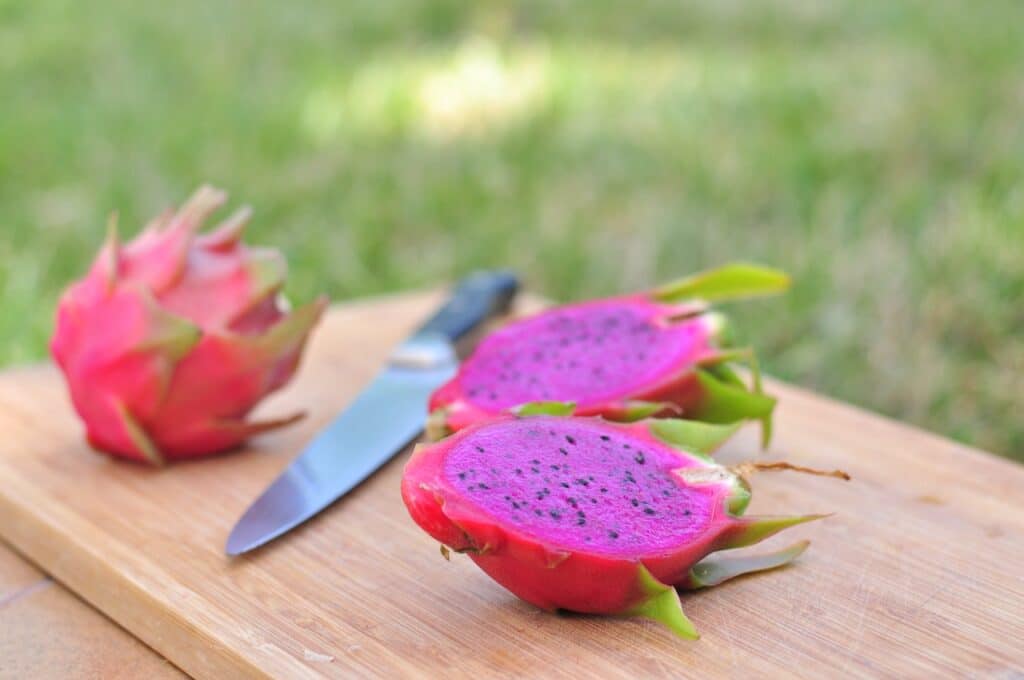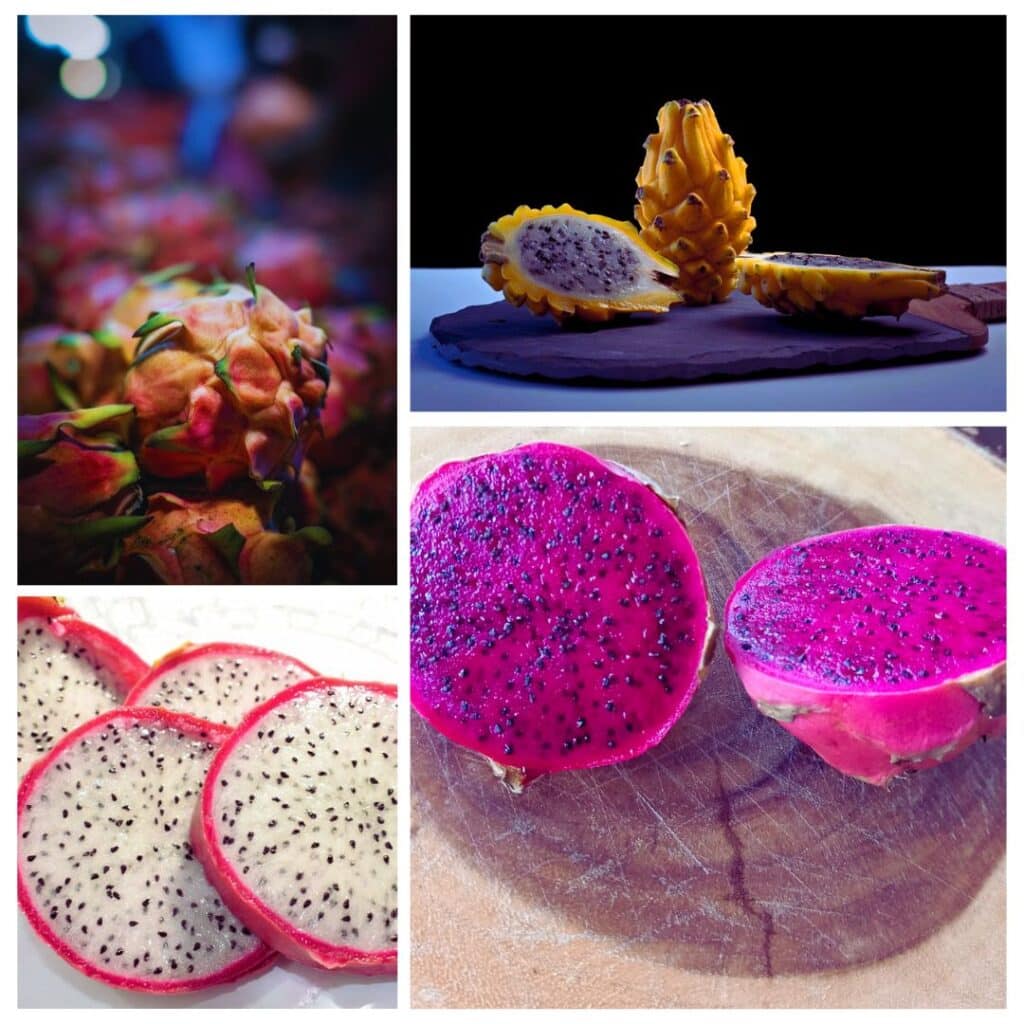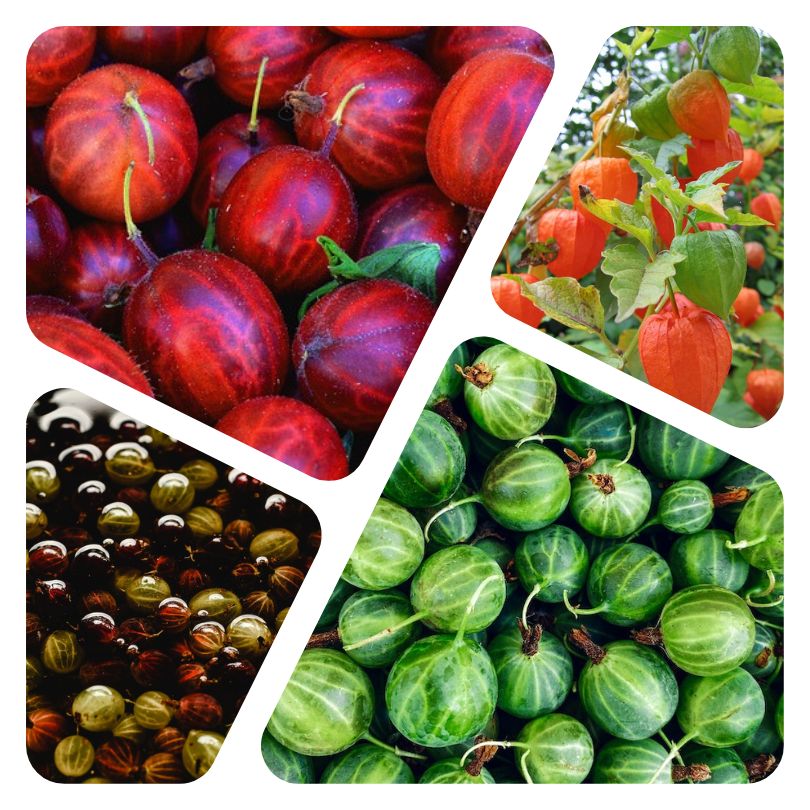Have you ever wondered how to grow gooseberries from seed? Gooseberries are one of those plants that are not too complicated to grow and will be rewarding for many years after maturity. After all, if these ribes are grown in the correct soil and are provided with the right maintenance, it can provide more than 6 pounds of delicious fruit every year!
Before growing gooseberries, the first step is to select the variety. Here is an article explaining the different types of gooseberry and some insights about their taste, disease resistance, maturity date, in other helpful information that might be beneficial for you.
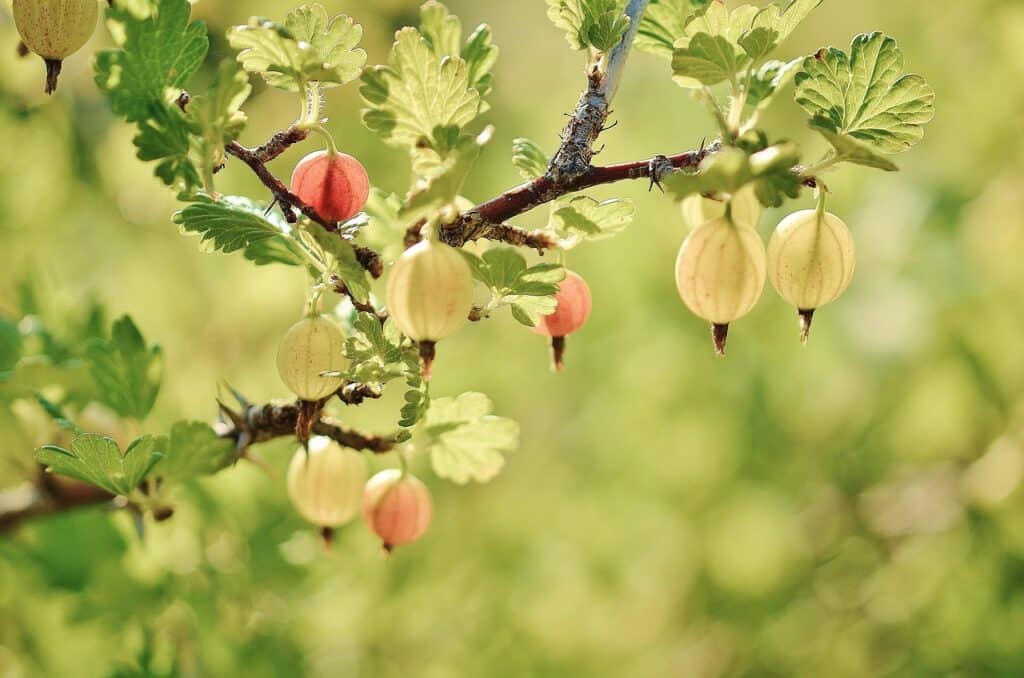
Optimal way to grow a gooseberry bush from seed
Plant 1-2 gooseberry seeds in your seedling trays by poking a 1/2 inch hole in them, cover them with soil. Water regularly keeping the soil moisturized but never wet or dry and maintain them in a temperature of 70-80 Fahrenheit under a grow light.
They should start sowing in 2-3 weeks and they’ll be ready to be transplanted when they produce their first true leaves and reach a height of 2-4 inches (5-6 weeks period). These are best grown in northern climates where cool moist summers can bring out the fruits flavor. Hardness USDA zones 3-6.
This process can be started 4-5 weeks before the last spring frost, or in the end of summer-beginning of fall if you live in a zone where there is no frost.
Where to obtain gooseberry seeds
While you can grow gooseberries straight from the seeds of the fruit, It’s important to take into account the next facts.
1- If the plant is a hybrid, the next generation will not stay true to the parent plant.
2- Before planting the seeds, they will have to go through a stratification process.
However, If you decide to do plant them from seeds, you can acquire them in a couple of ways
1- Take a handful of gooseberries and squeeze them into a strainer. when the seeds come out, manually remove the skin and rinse to get the remaining pulp. After this, let them dry in some paper towel
2- Purchase them online, you can search in a garden shop or just in any website near your location.
If you decide to take any of this approaches, remember to let the seeds stratify. For this, you can leave them outside during winter in pots filled with seed starting mix, have them in a place where the temperature is between 32-44 Fahrenheit.
If the winter already passed and you don’t have too much time, then place the seeds in some paper towel and put them inside a zip lock. Spray with some water until is moist but not waterlogged and let them in the refrigerator for 4-6 weeks. When the last spring frost has passed, go back to “Optimal way to grow gooseberry seeds”.
How to grow gooseberry bushes from cuttings
To grow a gooseberry bush from cuttings you will need a pair of pruning shears, is important to do the cut as clean as possible and to do it from a young stem if possible, after it, you can directly plant the stem into the floor.
Growing gooseberries from cuttings is easier and usually brings more advantages than growing them directly from seeds. Remember when we said that hybrid plants can’t be copied by seeds? Well, cuttings are able to reproduce the exact same genetic information as the parent plant, and in gooseberries, cuttings are usually the most efficient and safest way to plant them.
Here is a video on how to take a gooseberry cutting
Of course this doesn’t mean you can buy a gooseberry cutting from a shop you saw in India and plant it in America or another place. Unfortunately, unlike seeds, cuttings have a harder time adapting to different circumstances, thus is easier for them to get the diseases the parent plant had, or to have difficulties adapting to the new conditions of another territory.
If you are interested in getting gooseberry cuttings, you could ask a friend or relative that have the plant to give a couple to you after his pruning time, buy one in a local nursery (this is a good way to get a good hybrid variety), or if you feel courageous, you can go out in the wild and take one by yourself! (not recommended as plants from the wild could carry diseases).
Gooseberry soil requirements
If your gooseberry seedlings are big enough and they’ve been put through the necessary hardening process, it’s time to transplant them.
Gooseberry bushes can thrive in many kinds of soil, but for optimum results it’s better to have them in a well-drained acidic soil with a Ph level that ranges from 5.5 – 7. They also benefit from sunny spots (but beware of very hot summers, as the leaves can suffer from sunburn if the temperature goes above 85 Fahrenheit).
In the case you have doubts about the Ph level of your floor, or if the floor temperature is adequate to plant the bush, you can get a soil test meter, this will help get the details about the Ph level, temperature, and other information about your floor.
To prepare the soil, dig a hole in the garden and proceed to insert rich organic matter (compost, manure) into it, give it a nice mix with the soil in the ground and then again, dig another hole and plant your future gooseberry plant inside it. Cover the hole and throw some water until the soil gets moisty. Take out the weeds, and finish it by placing some mulch around the area
If your plant has leaves avoid watering them as much as possible, as this could cause your plant to suffer from mildew, which is the most common disease and enemy of gooseberry plants.
As gooseberries are asexual plants, it’s not necessary to have 2 bushes to obtain fruit, so you have the option of just planting 1 bush. But if you wish to plant different varieties of gooseberries, leave a space of at least 4-6 feet between the bushes.
Pruning gooseberries.
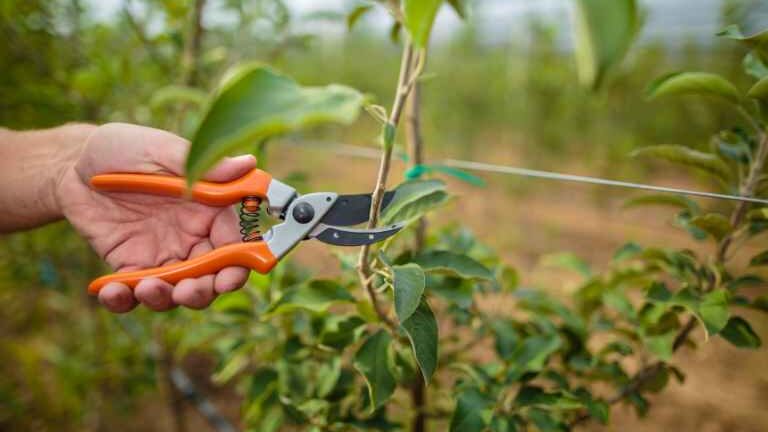
As many other perennial plants, gooseberries need to be pruned after the season is over. If you already have your pruning scissors, it might be a good idea to get some thick gloves too, as the thorns of this plants are no joke (also, don’t use your favorite shirt while doing this, unless you are interested in learning how to sew).
When pruning in summer (after harvest), cut the back laterals of the new season’s stems till 3-5 leaves, leaving the leaders unpruned. Prune just above an upward and outward-facing bud. In fall, It’s important to prune stems that are overcrowded in the same space (if they are very close together it may attract pest) and take out any suckers or stems very close to the ground.
Gooseberry diseases
Here’s a short list of the different diseases and pest that commonly affect gooseberries and how to take care of them.
Gooseberry Mildew
The American gooseberry mildew disease is one of the most common, this fungus causes the leaves to appear like they have patches of white powder on the leaves and shoots. Many hybrid varieties are resistant to this.
Some of the causes for this is high humidity in dry summers and this means having the leaves wet and then having a slightly fast change to a very hot and dry weather. This could happen if it rains at summer night and then it the morning it becomes really hot, or if the leaves of the gooseberry bush get’s watered.
To control mildew, prune shoot tips by a third and spray the plant with sulfur fungicide or a potassium bicarbonate spray. It’s also important to do proper watering techniques and avoid spraying the leaves of the plant with water. Furthermore, acquiring a Mildew resistant variety will help avoiding this problem.
Micronutrients Deficiencies
Leaf margin scorching and weak wood are symptoms of a deficiency in potassium while yellowing leaves are symptoms of magnesium deficiency. If your soil is deficient in any of these nutrients, fertilize with granite dust for potassium and with Epsom salts for magnesium.
White Pine Blister Rust
While this disease might not affect gooseberry plants too much, it can be lethal for white pines. This disease needs currants or gooseberries and a white pine to complete it’s life cycle.
Yellow patches on the upper side and orange pustules on the underside of the leaves are some symptoms of White Pine Blister Rust on currants or gooseberry bushes. Infected leaves might also fall during the growing season. To prevent this from happening, plant resistant gooseberry cultivars and do it at least 200 feet away from any white pine.
Because of this disease, gooseberries were banned from the USA for many decades, until the ban was lifted in the 1960s. Despite this, many states still have their own regulations and it may not be permitted to plant gooseberries, if you are unsure how this rule applies to your area, contact your county’s extension office or your closest nursery (they shouldn’t be able to sell you gooseberries plants if the ban hasn’t been lifted).
Gooseberry pest
Birds
Birds love to snatch gooseberries, and is hard to blame them. You can decide to do something about them or not, depending on how many gooseberries they are taking from the bush, but in the case you want to take precautions, the best way to control them is by acquiring a bird netting.
Insects
Birds will probably be the biggest problem while the fruits are growing, but you should also keep an eye for aphids, larvae and other insects. Some of them can be handpicked like gooseberry fruitworms, and others can be sprayed with hoses, pruning is also a good choice for many of them.
If you want to check more information about the different pest and diseases that affect gooseberries and currants, click this link.
Gooseberry harvesting
Gooseberries will be ready for harvest in the summer, the fruits ripe in a 3-6 week period so you will need to collect the harvest a few times. Early cultivars are harvested in early June and they are best used for cooking pies, jams, or other culinary recipes. Late cultivars will ripe in mid July – Early August.
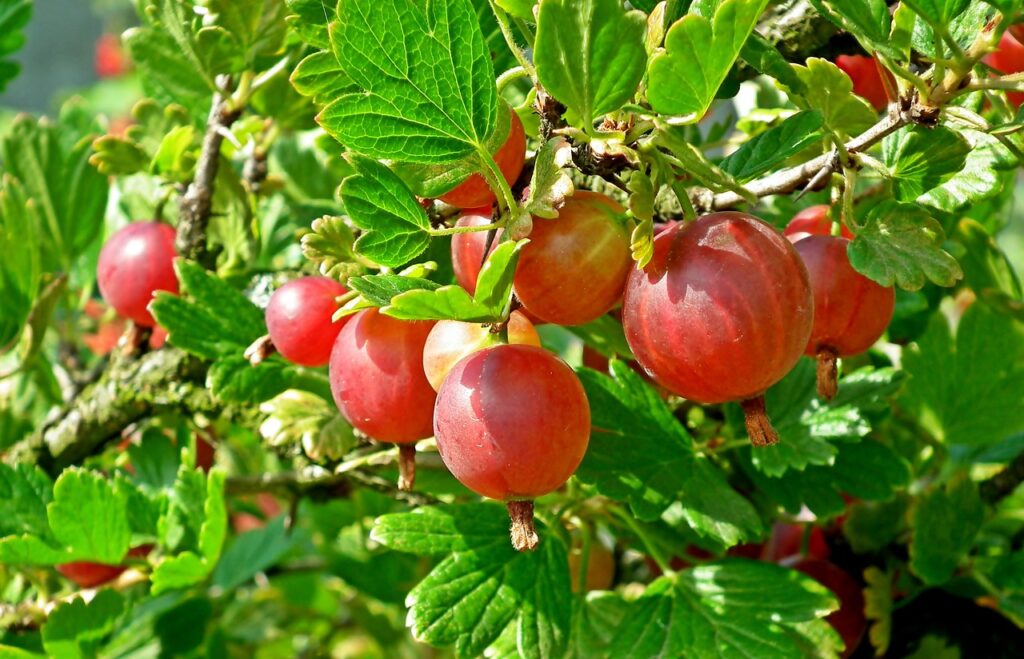
The color will depend on the variety, but usually when gooseberries are greenish and hard to the touch they are still un-ripe, these are the ones you’d want to use for cooking. When they are softer to the touch and some time after there’s a change of color (depending on the varieties) you can expect for them to be ripe. The best way to find out though, is to try one for yourself!
While gooseberries can be harvested the same year they are planted (if properly planted) you might want to cut any flowers on the first year to let the plant focus on settling it’s roots. Year after year, the harvest will be bigger until it reaches maturity in the third-fourth year.
You can expect to harvest 6-12 pounds of fruit per bush (depending on the cultivar) after they’ve reached maturity! I hope you’ve enjoyed this guide on how to grow gooseberries from seed, I wish you a happy growing!

